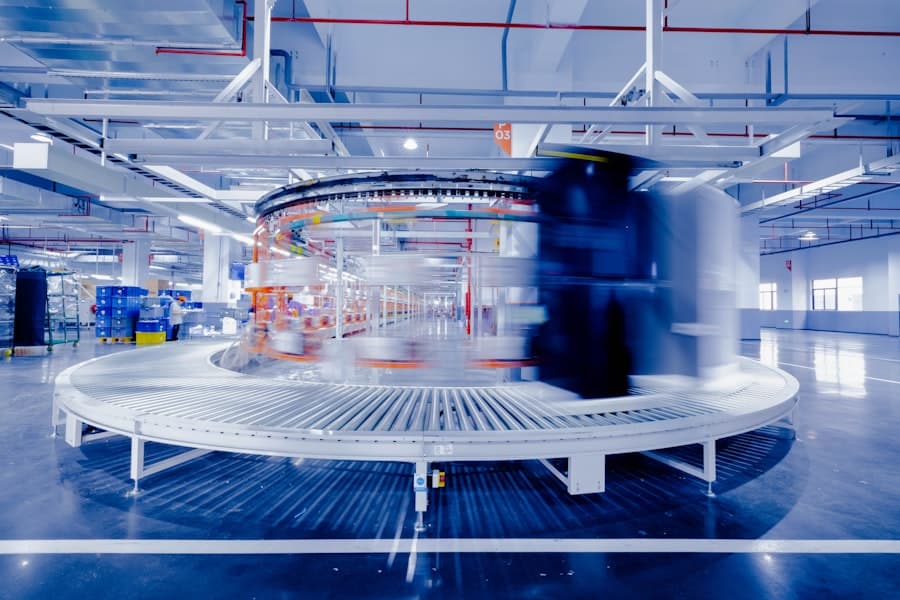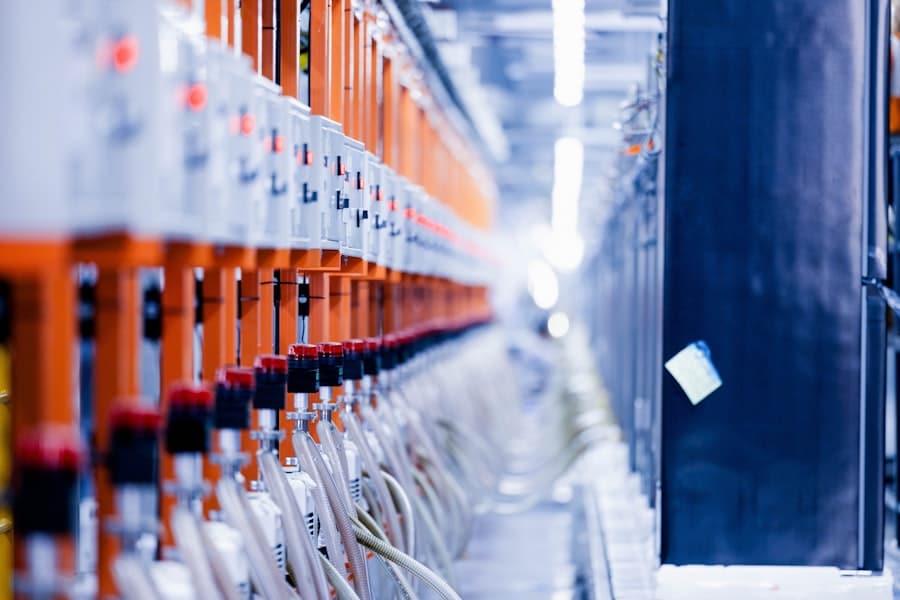The landscape of public transport is undergoing a significant transformation, driven by advancements in technology and the increasing demand for efficient, reliable, and sustainable transportation solutions. Automation in public transport encompasses a range of technologies, from autonomous vehicles to smart ticketing systems, all aimed at enhancing the user experience while optimizing operational efficiency. As urban populations swell and the need for effective mobility solutions intensifies, the integration of automation into public transport systems has emerged as a pivotal strategy for cities worldwide.
The concept of automation in public transport is not entirely new; however, recent technological breakthroughs have accelerated its adoption. Innovations such as artificial intelligence (AI), machine learning, and the Internet of Things (IoT) are reshaping how public transport operates. These technologies enable real-time data analysis, predictive maintenance, and improved route planning, which collectively enhance service delivery.
As cities grapple with congestion, pollution, and the need for sustainable development, automated public transport systems present a viable solution to these pressing challenges.
Key Takeaways
- Automation in public transport refers to the use of technology to operate vehicles and systems without human intervention.
- Benefits of automation in public transport include improved safety, efficiency, and reliability, as well as reduced operating costs and environmental impact.
- Challenges and concerns of automation in public transport include potential job displacement, cybersecurity risks, and public acceptance of autonomous vehicles.
- Automation in public transport may lead to changes in employment, with potential job losses in traditional roles but new opportunities in technology and maintenance.
- Future developments and innovations in automated public transport include the use of artificial intelligence, electric and autonomous vehicles, and smart infrastructure to improve the passenger experience and reduce congestion.
Benefits of Automation in Public Transport
One of the most significant benefits of automation in public transport is the potential for increased efficiency. Automated systems can optimize routes and schedules based on real-time data, ensuring that vehicles are deployed where they are needed most. For instance, cities like Singapore have implemented smart traffic management systems that utilize AI to analyze traffic patterns and adjust bus frequencies accordingly.
This not only reduces wait times for passengers but also minimizes unnecessary fuel consumption and emissions. Moreover, automation can enhance safety within public transport systems. Autonomous vehicles are equipped with advanced sensors and algorithms that allow them to detect obstacles, pedestrians, and other vehicles in real time.
This capability significantly reduces the likelihood of accidents caused by human error, which is a leading cause of incidents in traditional public transport systems. For example, Waymo’s autonomous shuttles have demonstrated a remarkable safety record in urban environments, showcasing how automation can lead to safer travel experiences for passengers. In addition to efficiency and safety, automation can also improve accessibility for individuals with disabilities.
Automated vehicles can be designed with features that cater specifically to the needs of passengers with mobility challenges. For instance, self-driving buses can be equipped with ramps and automated doors that facilitate easy boarding and alighting. This inclusivity not only enhances the travel experience for all users but also aligns with broader societal goals of equity and accessibility in public transport.
Challenges and Concerns of Automation in Public Transport

Despite the numerous advantages associated with automation in public transport, several challenges and concerns must be addressed to ensure successful implementation. One of the primary concerns is the technological reliability of automated systems. While advancements in AI and machine learning have made significant strides, there remain uncertainties regarding how these systems will perform in unpredictable real-world scenarios.
For instance, adverse weather conditions or unexpected road hazards can pose challenges for autonomous vehicles, potentially leading to service disruptions or safety risks. Another critical challenge is the regulatory landscape surrounding automated public transport. Governments and regulatory bodies must establish clear guidelines and standards to govern the operation of autonomous vehicles.
This includes addressing liability issues in the event of accidents involving automated systems. The lack of a comprehensive regulatory framework can hinder the deployment of automated public transport solutions, as stakeholders may be hesitant to invest in technologies that lack legal clarity. Public perception also plays a crucial role in the acceptance of automated public transport.
Many individuals harbor concerns about the safety and reliability of autonomous vehicles, stemming from high-profile incidents involving self-driving technology. Building public trust requires transparent communication about the safety measures in place and demonstrating the effectiveness of automated systems through pilot programs and real-world applications.
Impact of Automation on Employment in Public Transport
The rise of automation in public transport raises important questions about its impact on employment within the sector. While automation has the potential to streamline operations and reduce costs, it also poses a threat to traditional jobs associated with driving and operational roles. For instance, bus drivers may find their positions at risk as cities increasingly adopt autonomous buses.
This shift necessitates a reevaluation of workforce training and development programs to equip employees with new skills relevant to an automated environment. However, it is essential to recognize that automation does not necessarily equate to job loss across the board. While certain roles may become obsolete, new opportunities will emerge as public transport systems evolve.
For example, there will be an increased demand for professionals skilled in managing and maintaining automated systems, as well as those involved in data analysis and cybersecurity. The transition to an automated workforce requires proactive measures from both employers and policymakers to ensure that workers are supported through retraining initiatives. Furthermore, the integration of automation can lead to enhanced job satisfaction for remaining employees.
With routine tasks being handled by automated systems, human workers can focus on more complex responsibilities that require critical thinking and interpersonal skills. This shift can lead to a more engaged workforce that contributes positively to the overall efficiency and effectiveness of public transport services.
Future Developments and Innovations in Automated Public Transport
The future of automated public transport is poised for exciting developments as technology continues to advance at a rapid pace. One area of innovation is the integration of electric vehicles (EVs) with autonomous technology. As cities strive to reduce their carbon footprints, electric autonomous buses are becoming increasingly viable options for sustainable public transport solutions.
Companies like Proterra are leading the charge by developing electric buses equipped with autonomous driving capabilities, which could revolutionize urban mobility while addressing environmental concerns. Another promising avenue for future developments is the use of connected infrastructure to enhance automated public transport systems. Smart city initiatives are increasingly focusing on creating interconnected networks that allow vehicles to communicate with traffic signals, road sensors, and other infrastructure elements.
This connectivity can optimize traffic flow and improve safety by enabling vehicles to anticipate changes in their environment. For example, a connected autonomous bus could receive real-time updates about traffic conditions ahead, allowing it to adjust its speed or route proactively. Moreover, advancements in artificial intelligence will continue to play a crucial role in shaping the future of automated public transport.
Machine learning algorithms will enable vehicles to learn from their surroundings and adapt their behavior over time, leading to more efficient operations. As these technologies mature, we can expect to see more sophisticated automated systems capable of navigating complex urban environments with minimal human intervention.
Environmental Impact of Automated Public Transport

The environmental implications of automated public transport are significant and multifaceted. One of the most notable benefits is the potential reduction in greenhouse gas emissions associated with transportation. By integrating electric vehicles into automated fleets, cities can significantly decrease their reliance on fossil fuels while promoting cleaner air quality.
For instance, cities like Los Angeles are exploring electric autonomous shuttles as part of their efforts to transition towards sustainable transportation solutions. Additionally, automated public transport systems can contribute to reduced congestion on urban roadways. By optimizing routes and schedules based on real-time data, these systems can minimize unnecessary trips and improve overall traffic flow.
This reduction in congestion not only leads to shorter travel times but also decreases fuel consumption and emissions from idling vehicles. Studies have shown that efficient public transport systems can significantly lower per capita emissions compared to private vehicle use. Furthermore, the integration of shared mobility services with automated public transport can enhance sustainability efforts.
Ride-sharing platforms that utilize autonomous vehicles can reduce the number of single-occupancy vehicles on the road, further alleviating congestion and lowering emissions. Cities that embrace this model can create a more efficient transportation ecosystem that prioritizes sustainability while meeting the needs of their residents.
Integration of Automation with Other Modes of Transportation
The successful implementation of automated public transport relies heavily on its integration with other modes of transportation within urban environments. A seamless transportation network that combines buses, trains, bicycles, and ride-sharing services is essential for maximizing efficiency and convenience for users. For example, cities like Amsterdam have developed integrated mobility platforms that allow passengers to plan multi-modal journeys using a single app, facilitating smooth transitions between different modes of transport.
One innovative approach is the concept of Mobility as a Service (MaaS), which envisions a holistic transportation ecosystem where users can access various services through a unified platform. Automated public transport can play a pivotal role within this framework by providing reliable connections between different modes while offering real-time information about schedules and availability. This integration not only enhances user experience but also encourages greater adoption of public transport by making it more accessible and convenient.
Moreover, partnerships between public transport agencies and private mobility providers can foster innovation in integrated transportation solutions. Collaborations between companies like Uber or Lyft with local transit authorities can lead to complementary services that enhance overall mobility options for residents. For instance, an autonomous shuttle service could provide first-mile/last-mile connectivity to transit hubs, ensuring that users have convenient access to larger public transport networks.
The Role of Automation in Shaping the Future of Public Transport
As cities continue to evolve in response to growing populations and environmental challenges, automation will play an increasingly vital role in shaping the future of public transport systems worldwide. The benefits associated with automation—ranging from enhanced efficiency and safety to improved accessibility—underscore its potential as a transformative force within urban mobility landscapes. However, addressing challenges related to technology reliability, regulatory frameworks, and workforce impacts will be crucial for successful implementation.
Looking ahead, ongoing innovations in electric vehicles, connected infrastructure, and artificial intelligence will further enhance the capabilities of automated public transport systems. By integrating these technologies with existing transportation networks and fostering collaboration between various stakeholders, cities can create sustainable mobility solutions that meet the needs of their residents while minimizing environmental impacts. Ultimately, automation represents not just a technological advancement but a paradigm shift in how we conceive urban transportation.
As we navigate this transition towards more automated systems, it is essential to prioritize inclusivity, safety, and sustainability—ensuring that all members of society benefit from these advancements while paving the way for a more efficient future in public transport.
As cities around the world strive to enhance efficiency and sustainability, the integration of automated systems is becoming increasingly prevalent. A related article that delves into the technological advancements influencing various sectors is Best Free Software for 3D Modeling in 2023. This article explores the cutting-edge tools available for 3D modeling, which are crucial for designing and simulating automated transport systems, thereby highlighting the interconnectedness of technology and public transport innovation.
FAQs
What is automation in public transport?
Automation in public transport refers to the use of technology to operate and control vehicles and systems without direct human intervention. This can include automated driving systems, automated ticketing and payment systems, and automated scheduling and routing.
How is automation changing the future of public transport?
Automation is changing the future of public transport by improving safety, efficiency, and reliability. Automated systems can reduce the risk of human error, optimize routes and schedules, and provide a more seamless and convenient experience for passengers.
What are some examples of automation in public transport?
Examples of automation in public transport include driverless trains and buses, automated fare collection systems, real-time passenger information systems, and automated maintenance and monitoring systems.
What are the benefits of automation in public transport?
The benefits of automation in public transport include improved safety, reduced operating costs, increased capacity and efficiency, and a more seamless and convenient experience for passengers. Automation can also help reduce environmental impact by optimizing energy use and reducing emissions.
What are the challenges of implementing automation in public transport?
Challenges of implementing automation in public transport include the initial cost of investment, the need for infrastructure and technology upgrades, potential job displacement for workers in the industry, and concerns about cybersecurity and data privacy. Additionally, public acceptance and trust in automated systems may also be a challenge.

